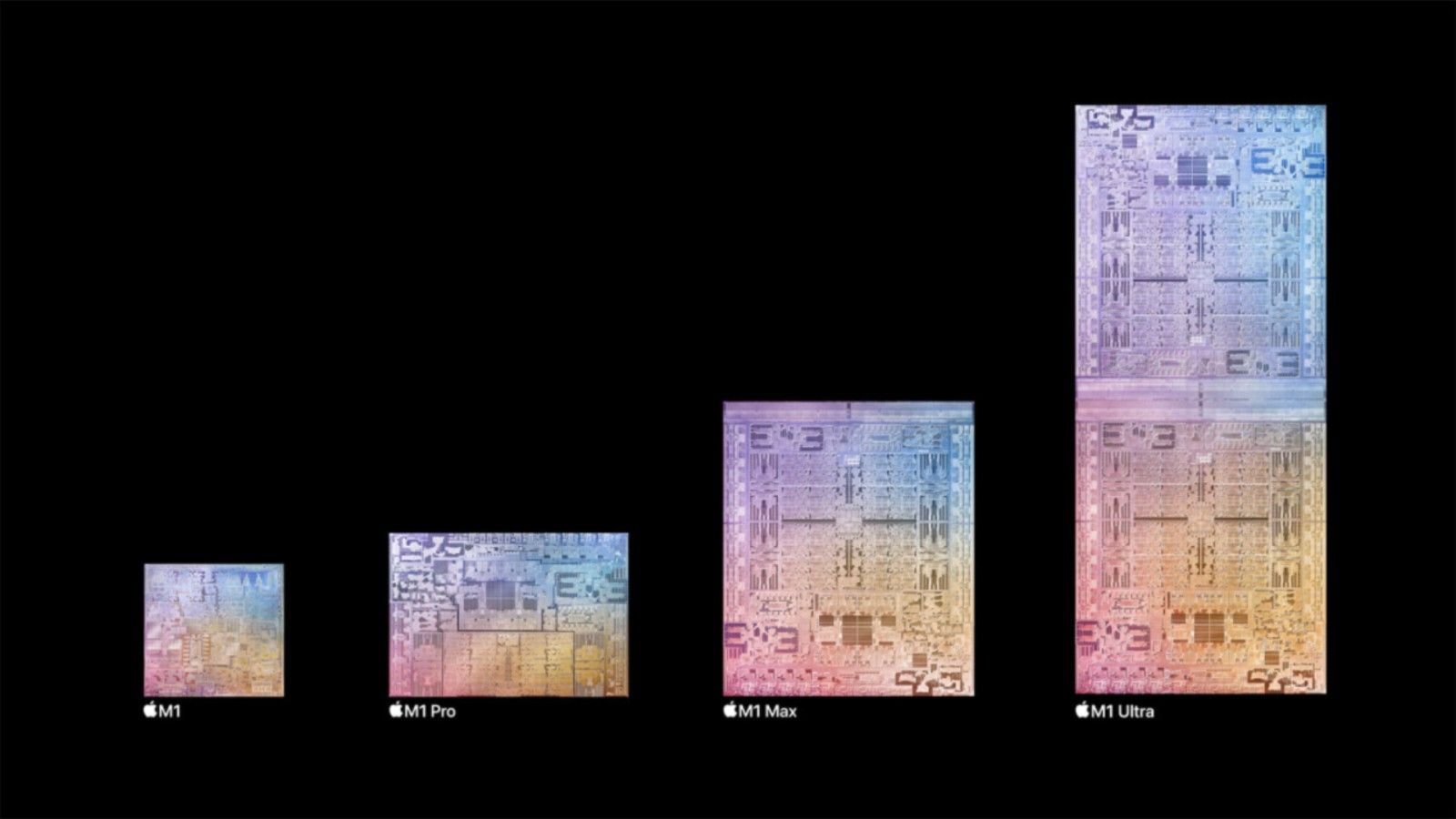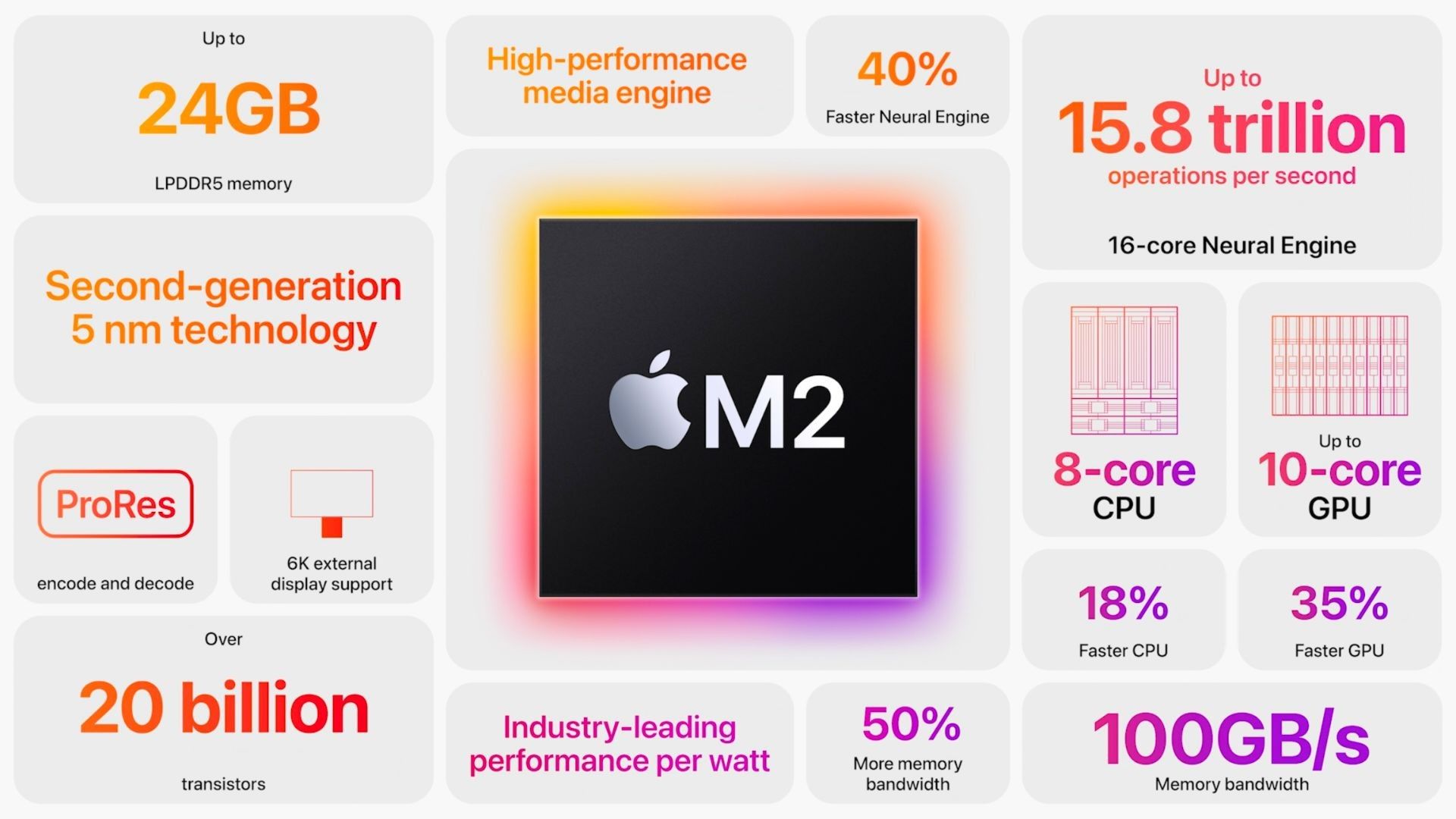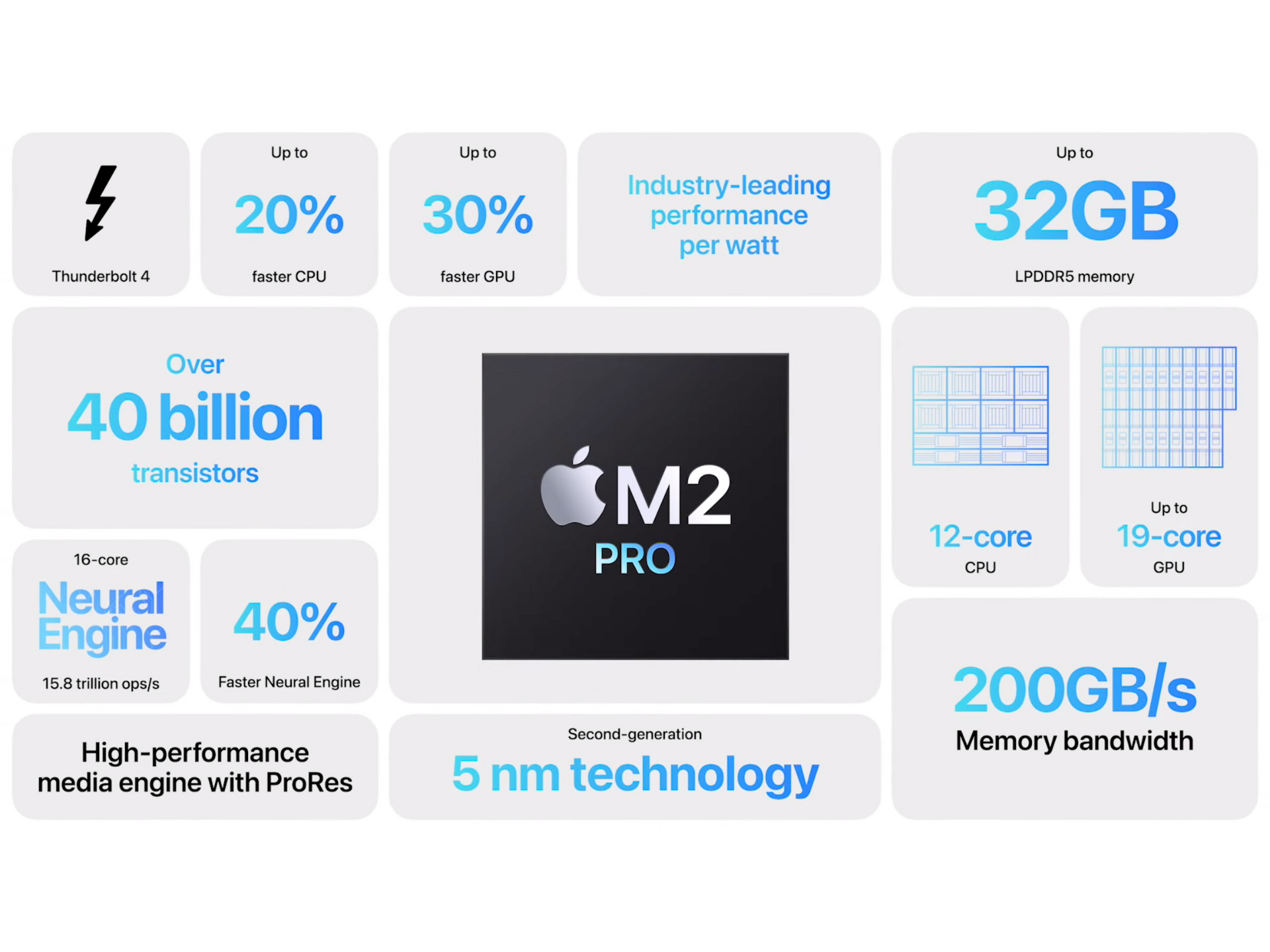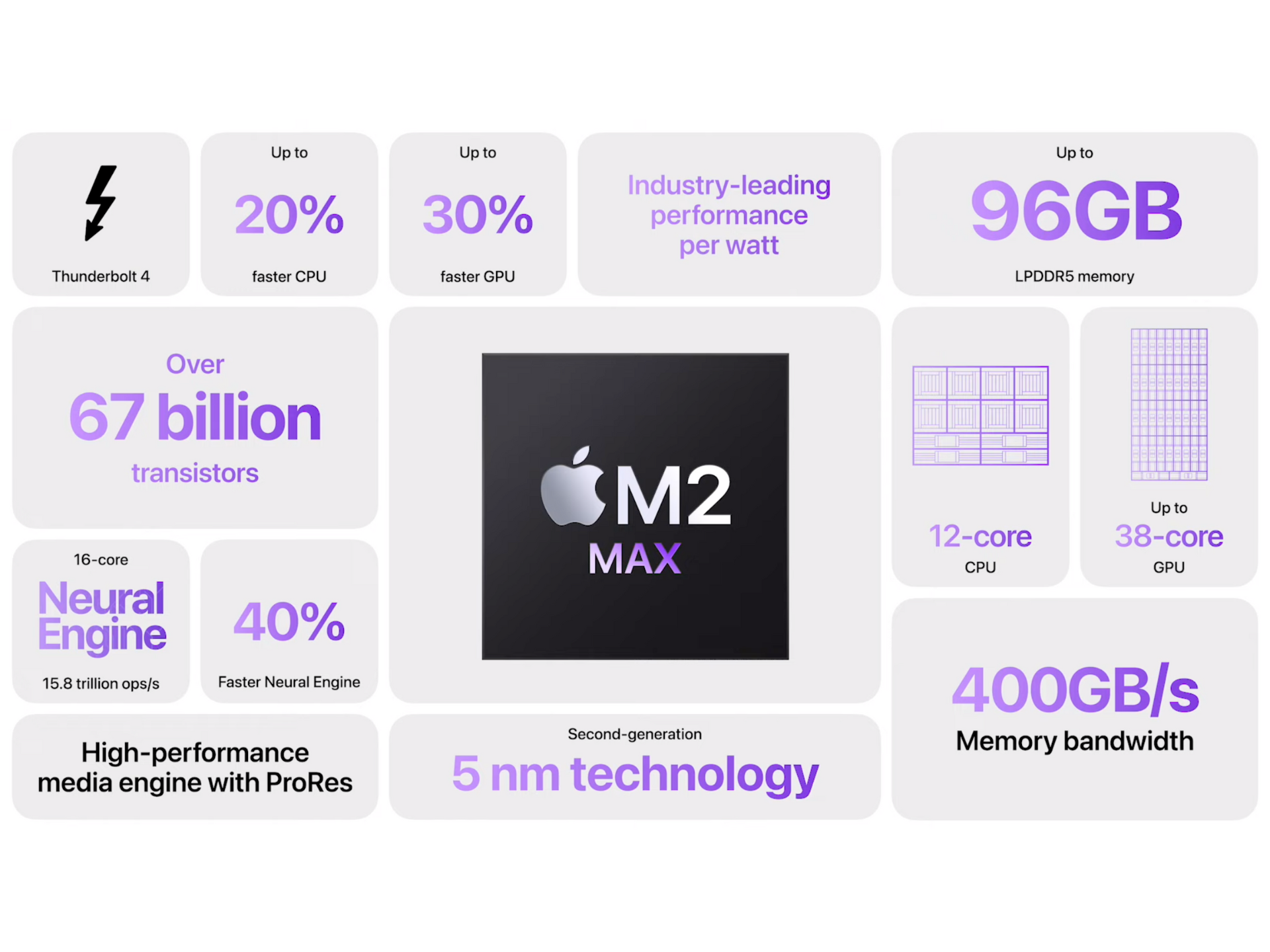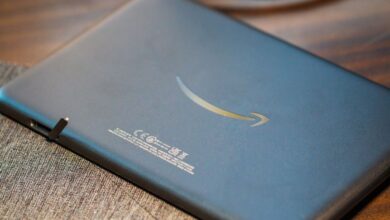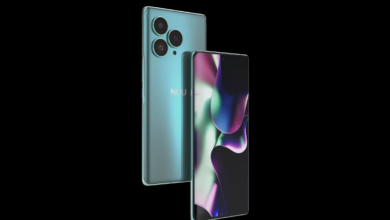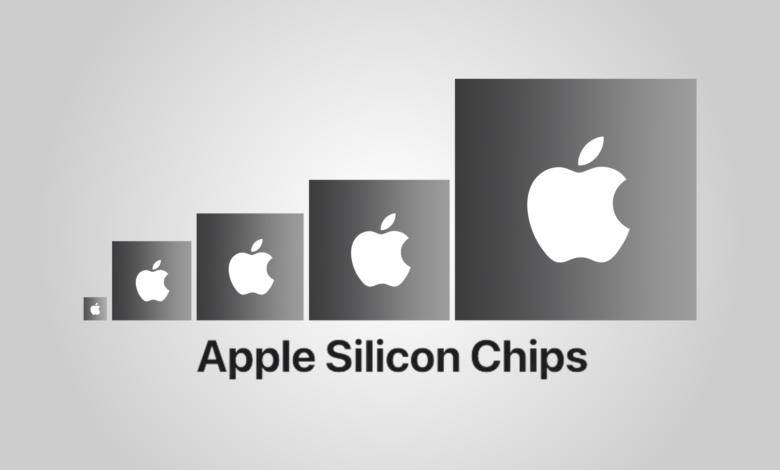
Everything you need to know about all Apple custom chips
[ad_1]
Contents
UPDATE: 11/01/2023 09:15 EST BY ROLAND UDVARLAKI
We regularly update these posts to ensure they’re up-to-date. We included the new A17 Pro, M3 series of chips, and several other changes.
Apple has been developing its own custom silicon for iPhones, iPads, Apple Watches, and many other products for several years. It has more than a decade’s worth of experience, and it also has partnerships with leading semiconductor companies to produce chips. Over the past few years, the company decided to take matters into its own hands, and it started to reduce using chips from companies such as Intel and AMD, and focus more on the in-house developed chips, such as the Apple A-series and the latest M-series of computer silicon.
With the introduction of the new M series of chips, Apple completely changed the game for Mac laptops, desktops, and even the iPads. Apple controls much of its infrastructure, and Apple is one of the most valuable companies to take matters into its own hands. Having this much power allows Apple to create more powerful chips that are more efficient than the ones offered by the competition and more tightly integrated with the ecosystem.
Apple U-Series
The Apple U series chip implements the ultra-wideband radio, and it allows Apple devices to locate products, such as iPhones, AirPods, and the AirTag. The U chip communicates with other Apple devices using the ultra-wideband that uses high-frequency, low range, radio signals to locate devices accurately. The chip lets users find gadgets and smartphones to a highly accurate level, and it’s more precise than traditional GPS and Bluetooth trackers.
These Apple devices use the U1 Chip:
- AirTag
- AirPods Pro (2nd Gen)
- Apple Watch Series 6 and later
- HomePod and HomePod mini-series
- iPhone 11 and later series (excluding the iPhone SE series)
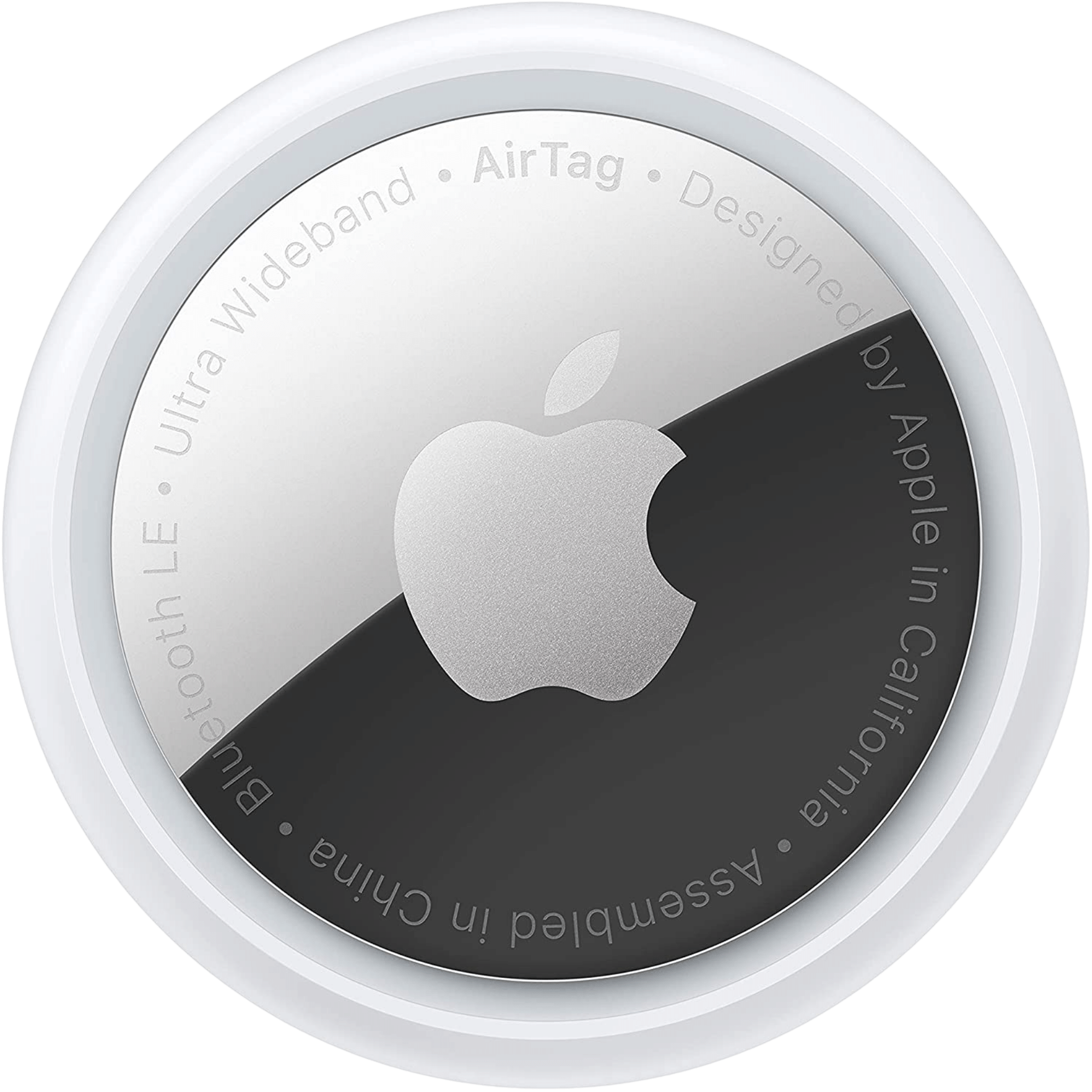
Apple AirTag
$27 $29 Save $2
The Apple AirTag lets you easily keep track of your devices, pets, bags, and other items using the Find My app. It’s easy to set up, and it works on all Apple devices, such as iPhones, iPad, and Macs.
Apple W-Series
The Apple W series of chips are used in wireless devices, such as AirPods (first generation) and Beats headphones (Beats Flex, Beats Solo3, Beats Studio3, BeatsX, Powerbeats3), and wireless earbuds. The “W” stands for “wireless”. It’s also worth noting that the Apple Watch Series 3 also relied on the W2 chip to improve Wi-Fi and Bluetooth efficiency, and it was integrated into the Apple S3 chip, which powered the smartwatch. The Apple Watch Series 4, Series 5, Series 6, SE, Series 7, Series 8, and later the Apple Watch Ultra relied on the improved Apple W3 chip to improve connectivity and support Bluetooth 5.0 and 5.3.
Apple H-Series
The Apple H series of chips are mainly used in headphones and other wireless audio devices. The “H” stands for “headphones”. The Apple H1 chip was first introduced in 2019, and it was used by the AirPods 2, AirPods 3, and later in Beats products, such as the Powerbeats Pro, Beats Solo, AirPods Pro (1st gen), and more. The AirPods Max was unveiled in 2020, and it also relied on the H1 chip to manage connectivity, firmware, and Bluetooth connection.
The AirPods Pro (2nd Gen) was announced in September 2022, and it came with the new H2 chip that introduced support for Bluetooth 5.3. The recently unveiled Beats Studio Buds+ earbuds are some of the first Beats devices to lack the H and the W series of chips to provide better support for Android users.
These Apple and Beats devices are equipped with the Apple H1 chip:
- AirPods (2nd Generation)
- AirPods (3rd Generation)
- AirPods Max
- AirPods Pro (1st Generation)
- Beats Solo Pro
- Powerbeats (2020)
- Powerbeats Pro
- Beats Fit Pro
Apple-made devices equipped with the Apple H2 chip:
- AirPods Pro (2nd Generation)
-
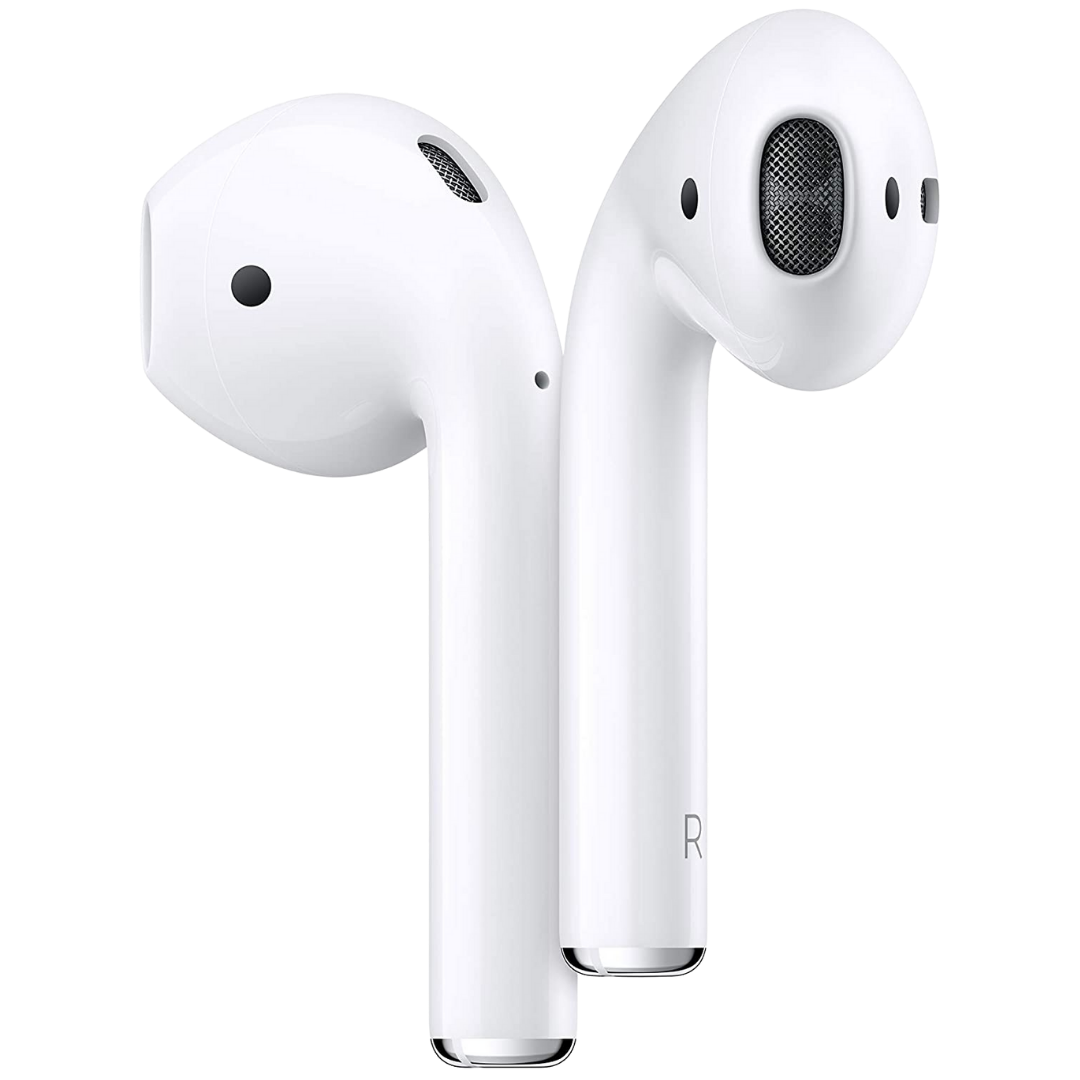
Apple AirPods 2nd Gen
$99 $129 Save $30
The Apple AirPods second generation comes with “Hey Siri”, and it provides a total of 24 hours of listening time with the charging case. It provides a seamless connection with Apple devices, and it’s the cheapest wireless earbuds from Apple.
-
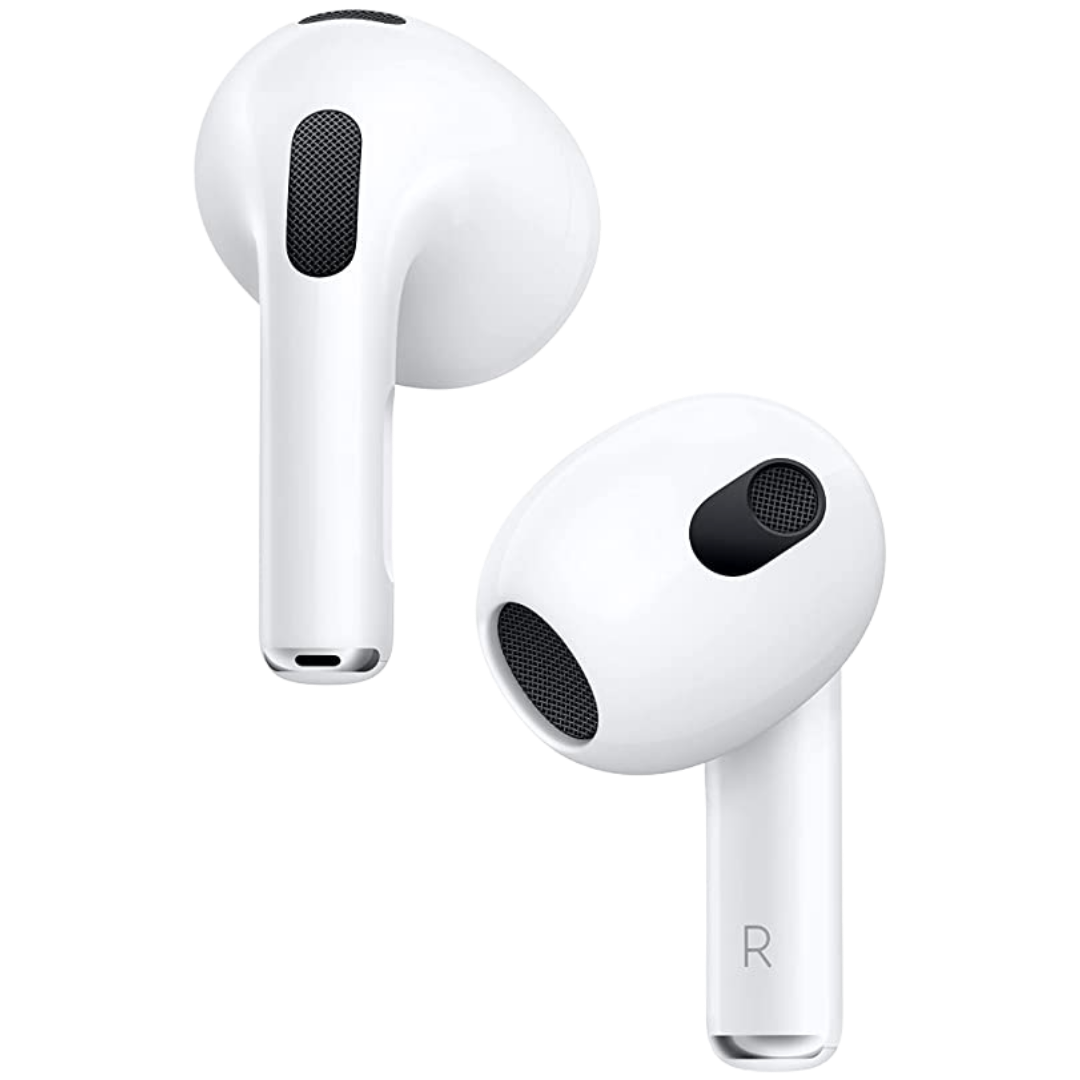
Apple AirPods 3
$150 $169 Save $19
AirPods 3 support Spatial Audio, Adaptive EQ, and has force sensors that let you easily control the earbuds while listening to music, watching movies, or taking a call. The earbuds are sweat and water-resistant and can last up to 6 hours on a single charge or 30 hours provided by the charging case.
-

Apple AirPods Pro (2nd Generation)
$189 $249 Save $60
The second generation of AirPods Pro brings the wearable very close to our winner, the Sony WF-1000XM4. Having used both, I can say the AirPods are now more comparable to Sony WF-1000XM4 in terms of audio performance. Noise Cancelation is great too! These no longer fall behind the Sony’s and are a close first. And like always, throw an iPhone into the fray, and the integration that’s on offer with these earbuds makes it a whole different ball game.
-

Apple AirPods Max
$480 $549 Save $69
The Apple AirPods Max is powered by the Apple H1 chip in each earcup, and it contains eight microphones to cancel out noise. It’s one of the best wireless headphones for Apple users, and it can last for up to 20 hours on a single charge.
Apple S-Series
The Apple S series of chips are used in Apple Watches, and the Apple S1 chip was released on September 9, 2014 alongside the first-generation Apple Watch. Apple usually unveils a new version of S series chip alongside the new Apple Watch, and at the time of writing this, Apple is currently at the Apple S9 generation, which offers 60% more transistors than the previous Apple S8 chip. The chip controls the processor, storage, memory, connectivity, and other components to ensure the watchOS can communicate with other Apple devices, such as iPhones, to handle notifications, messages, calls, etc.
Each new generation of S chip usually includes several performance improvements over its predecessor. Apple sometimes integrates new chips, or sensors inside to improve tracking and offer more measurement methods for users to track their health and activities.
The HomePod mini also relies on the Series 5 chip to power the device and ensure it can connect and communicate with other Apple devices. The HomePod (2nd Generation) relies on the Apple S7 series chips, and it was announced
-
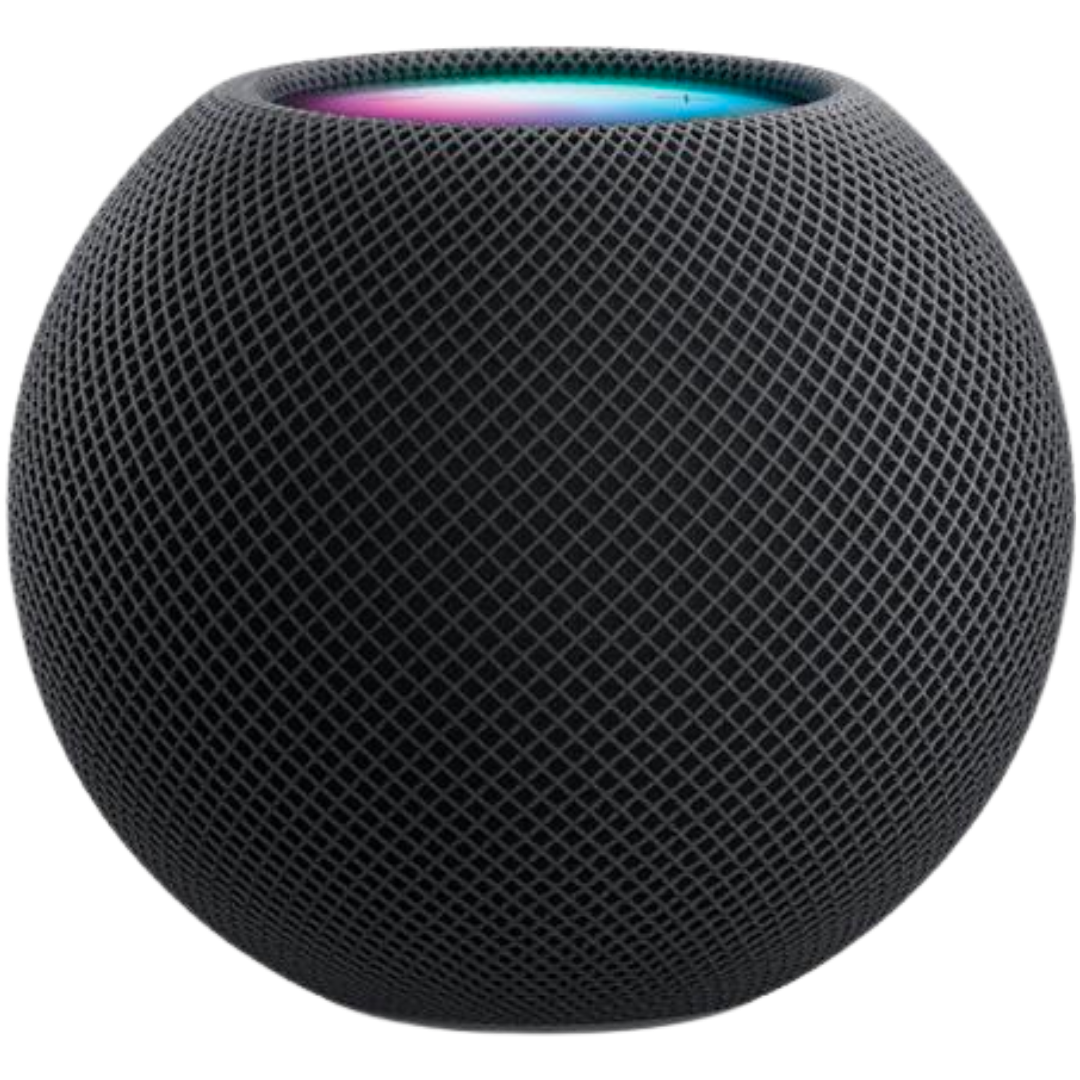
Apple HomePod Mini
The Apple HomePod mini comes with Siri, and it provides a crisp and 360-degree audio surround sound system.
-
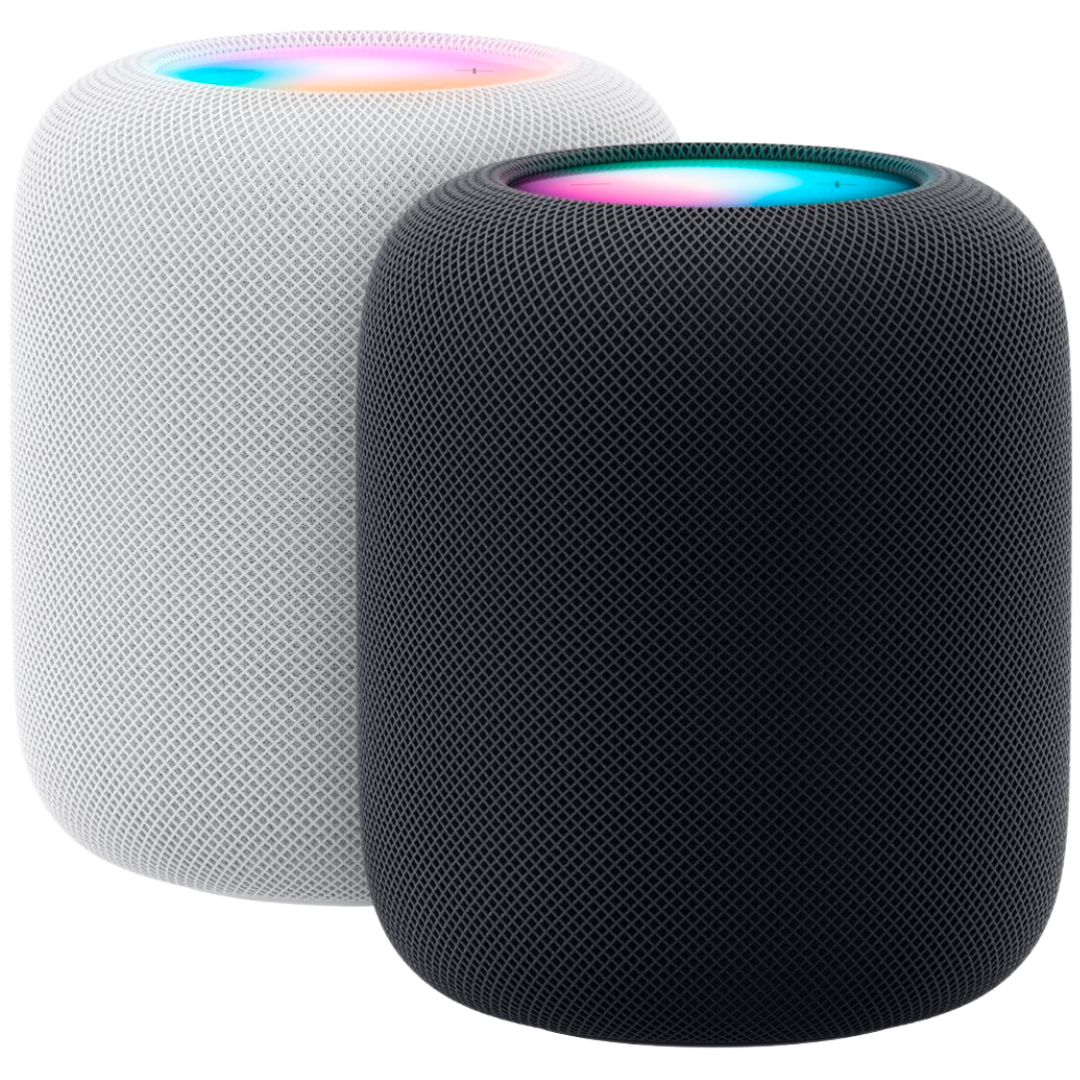
Apple HomePod (2nd generation)
HomePod 2nd Gen comes with a much more improved speaker system with advanced computational audio, Spatial Audio with Dolby Atmos, Siri, environmental sensors, Matter smart home standard support, and much more.
-
.png)
Apple Watch SE 2
$225 $249 Save $24
The affordable Apple Watch SE (2nd Generation) looks the same as its predecessor; it features improved fitness tracking and is powered by the latest and most powerful Apple S8 chip. It’s available in three colors and supports the same bands as the last generation.
-
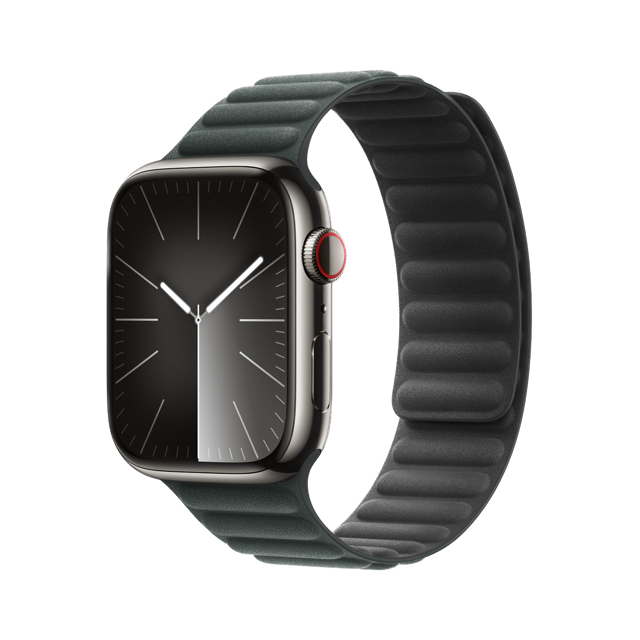
Apple Watch Series 9
Apple Watch Series 9 is the latest smartwatch from the Cupertino giant. It offers a whole day of battery life, a faster processor, and fresh ways to use the smartwatch with gestures.
-

Apple Watch Ultra 2
The Apple Watch Ultra 2 is powered by the new Apple S9 chip, and comes with improved tracking. It’s rugged, powerful, and it can last for up to 72 hours in Low Power Mode. It has the brightest display on any smartwatch, and it provides advanced metrics and views for you to track workouts.
Apple T-Series
The Apple T series of chips ensure that Mac devices aren’t tampered with and allows Mac machines to boot up securely. The chips also process and encrypt biometric information, such as Touch ID fingerprints, and it protects the microphone and the FaceTime camera from hacking.
Apple released two versions of the T chip over the years, the Apple T1, and the Apple T2. The T1 chip was an ARMv7 chip, and it was used in the 2016 and 2017 MacBook Pro laptops to ensure secure boot and protect encryption keys and store Touch ID biometric information. The T2 chip was first released with the iMac Pro 2017 machine, and it used a 64-bit ARMv8 chip that ran bridgeOS 2.0. It protected the storage drives and was used in Mac computers until the 13-inch MacBook Pro, the Early 2020 version.
Apple is no longer using the T series of chips to protect its machines from tampering and hacking, since the new M series of SoCs have the processes built-in to protect the internals.
Ever since Apple decided to use its own custom silicon (M series) chips to power its machines, the process, and security methods are built into the SoC itself; therefore, there is no longer a need to keep and use a dedicated chip.
These Mac computers are equipped with the Apple T2 Security Chip:
- iMac (Retina 5K, 27-inch, 2020)
- iMac Pro (2021)
- Mac Pro (2019)
- Mac Pro (Rack, 2019)
- Mac mini (2018)
- MacBook Air (Retina, 13-inch, 2020)
- MacBook Air (Retina, 13-inch, 2019)
- MacBook Air (Retina, 13-inch, 2018)
- MacBook Pro (13-inch, 2020, Two Thunderbolt 3 ports)
- MacBook Pro (13-inch, 2020, Four Thunderbolt 3 ports)
- MacBook Pro (16-inch, 2019)
- MacBook Pro (13-inch, 2019, Two Thunderbolt 3 ports)
- MacBook Pro (15-inch, 2019)
- MacBook Pro (13-inch, 2019, Four Thunderbolt 3 ports)
- MacBook Pro (15-inch, 2018)
- MacBook Pro (13-inch, 2018, Four Thunderbolt 3 ports)
Apple A-Series
Apple’s A-series of chips are used in the iPhone flagship smartphone lineup and the recently announced Studio Display. It also powers iPads, and the Apple TV HD and 4K are also equipped with the older A8, and A12 series of chips to run the download movies, process the image, and do the heavy lifting. The new Apple TV 4K (3rd Generation) boxes are powered by the newer Apple A15 Bionic chips. The Studio Display is equipped with the Apple A13 Bionic chip to process images, and power the web camera and speakers.
-
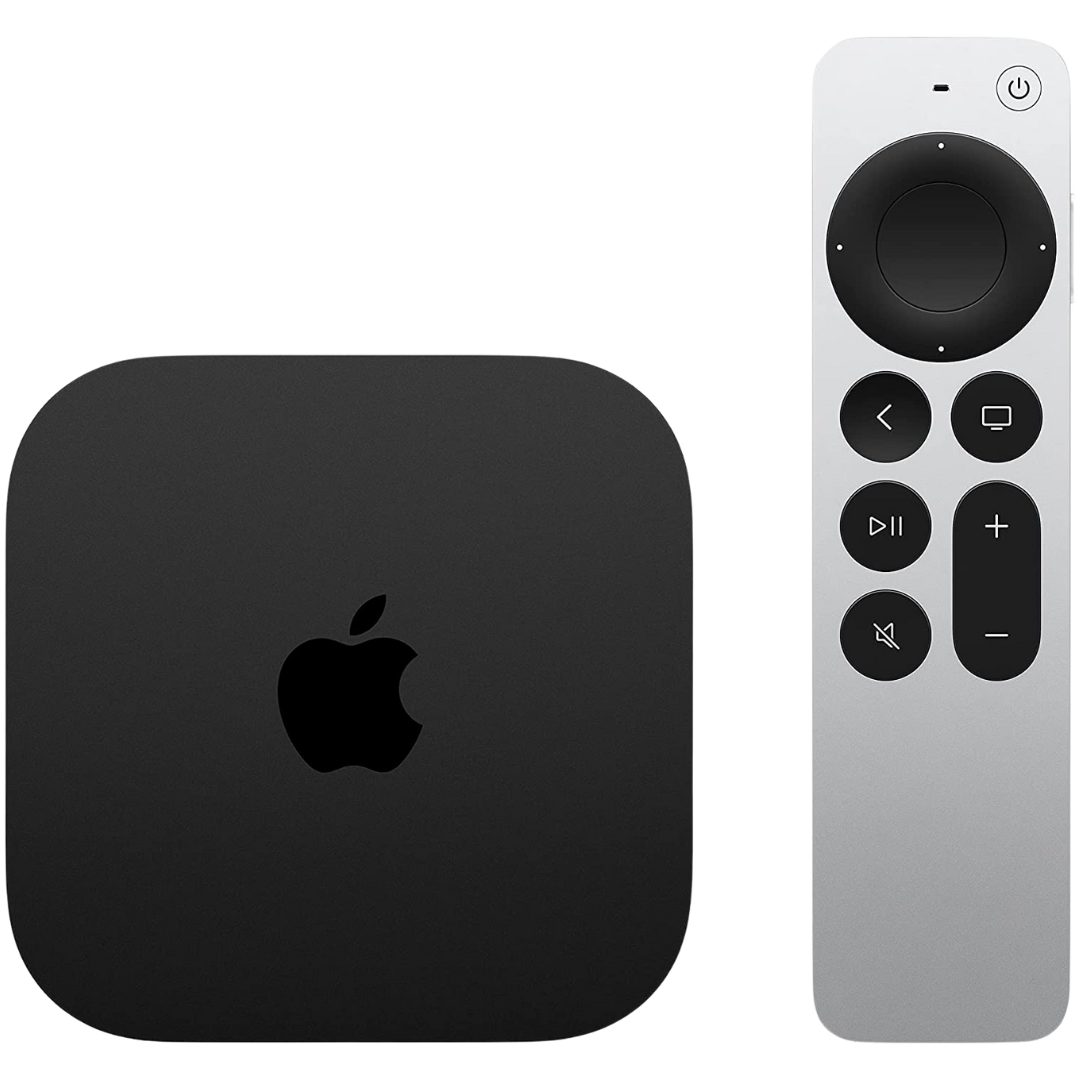
Apple TV 4K (3rd Gen., 2022)
Apple TV 4K (3rd Generation) is the latest streaming box from Apple. It’s now powered by the new Apple A15 Bionic chip, and it can even play Dolby Atmos, and HDR10+ content from your favorite streaming services, such as Netflix, Amazon Prime Video, Disney+, and HBO Max.
-

Apple Studio Display
$1485 $1599 Save $114
The Apple Studio Display is likely an overall for most people, but its price might be justified for professionals, and those who appreciate the exceptional build quality, excellent accuracy, and great compatibility with Apple products.
Apple started including its own chips back in 2007, when it revealed the first iPhone. It included a 412MHz single-core ARM11 chip, and it was manufactured by Samsung using the 90 nm process. The first generation of iPod Touch also used this very same SoC to handle tasks and power the device. Apple made four chips before switching over to the A-series.
While Apple develops its own chips to power the devices, the iPhones and iPads still rely on many other chips and modems to handle connectivity such as 5G, Wi-Fi, and even storage is made by other companies such as Samsung. Fun fact: The Face ID chip was introduced with the iPhone X back in 2017, powered by the Apple A11 Bionic chip, produced on the 10nm process.
Apple developed these chips before the A-series:
- APL0098: used in the original iPhone, iPhone 3G, and first-generation iPod Touch
- APL0278: used in second-generation iPod Touch
- APL0298: used in the iPhone 3GS
- APL2298: used in third-generation iPod Touch
Apple developed these chips under the A-series:
- Apple A4
- Apple A5
- Apple A5X
- Apple A6
- Apple A6X
- Apple A7
- Apple A8
- Apple A8X
- Apple A9
- Apple A9X
- Apple A10 Fusion
- Apple A10X Fusion
- Apple A11 Bionic
- Apple A12 Bionic
- Apple A12X Bionic
- Apple A12Z Bionic
- Apple A13 Bionic
- Apple A14 Bionic
- Apple A15 Bionic
- Apple A16 Bionic
- Apple A17 Pro
Apple A16 Bionic
The Apple A16 Bionic SoC is currently the latest chip that powers the iPhone 14 series, including the iPhone 14 Plus, iPhone 14, 14 Pro, and 14 Pro Max. The A16 Bionic is built on the 4nm process, and it has two high-performance and four high-efficiency cores. It has 50% higher memory bandwidth and a 7% faster 16-core Neural Engine that’s capable of 17 trillion operations per second. If you want to find out more about how the iPhone 14 series performs daily, we recommend you watch our review video.
Apple A17 Pro
Apple decided to change things up a bit with the new iPhone 15 series, and the latest iPhone 15 Pro and iPhone 15 Pro Max received rebranded and faster A17 Pro chips. The A17 Pro is built on the 3nm process, and the 64-bit ARM-based chipset offers the fastest speeds on an iPhone today. It has two high-performance cores, four high-efficiency cores, and a six-core GPU, and a 16-core Neural Engine for AI processes. It supports hardware-accelerated Ray Tracing and mesh shading, and it’s capable of “console-level” gaming.
-

iPhone 15
The iPhone 15 comes with a 6.1-inch OLED display with the new Dynamic Island, a dual camera setup, new colors, and a USB Type-C port. It’s powered by the Apple A16 Bionic chip, and it’s the most affordable high-end iPhone you can get your hands on today.
-
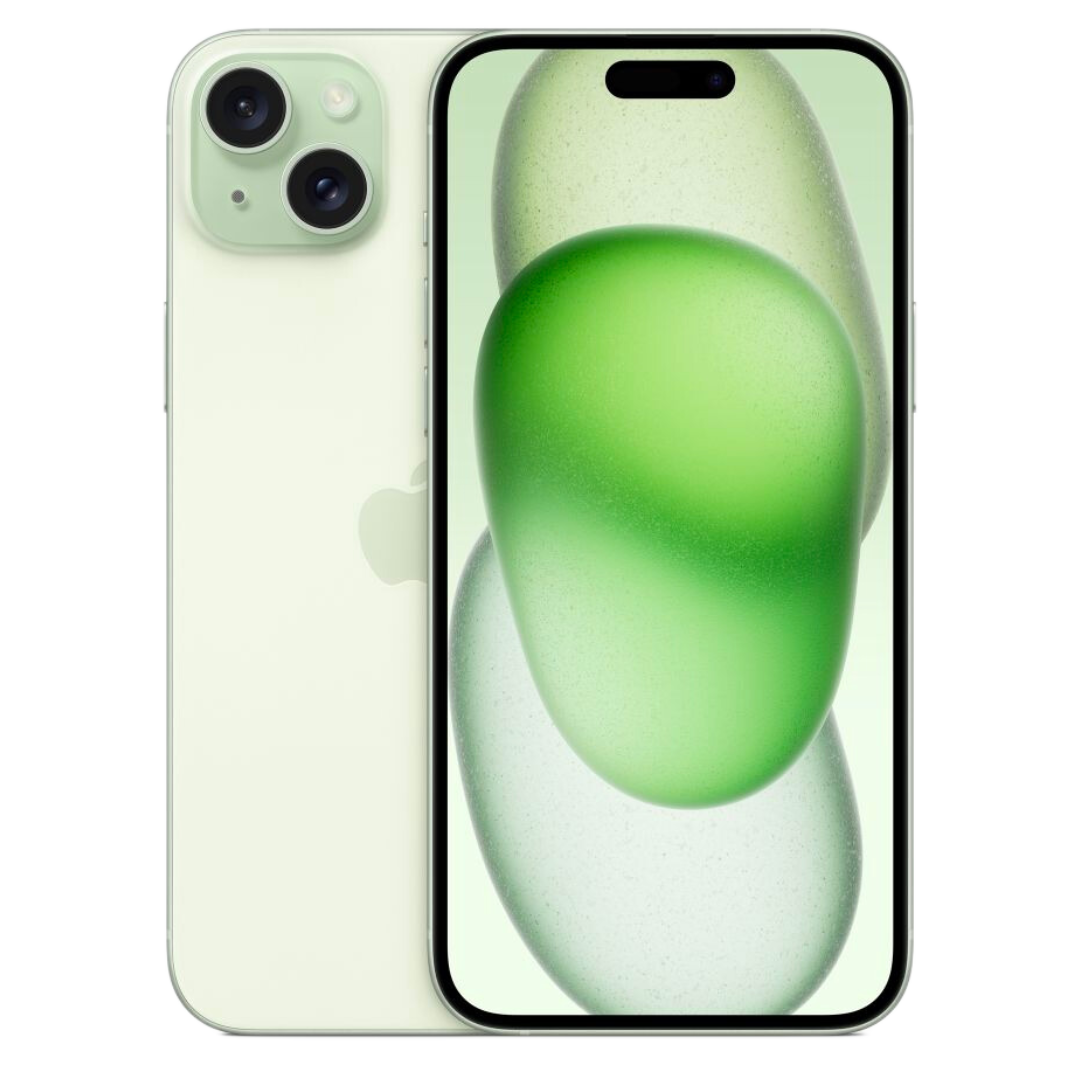
iPhone 15 Plus
The iPhone 15 Plus is larger than the standard iPhone 15. It comes with a 6.7-inch OLED display, a dual camera setup, new colors, and a USB Type-C port. It’s powered by the Apple A16 Bionic chip, and it’s the best and most affordable large iPhone you can get your hands on today.
-
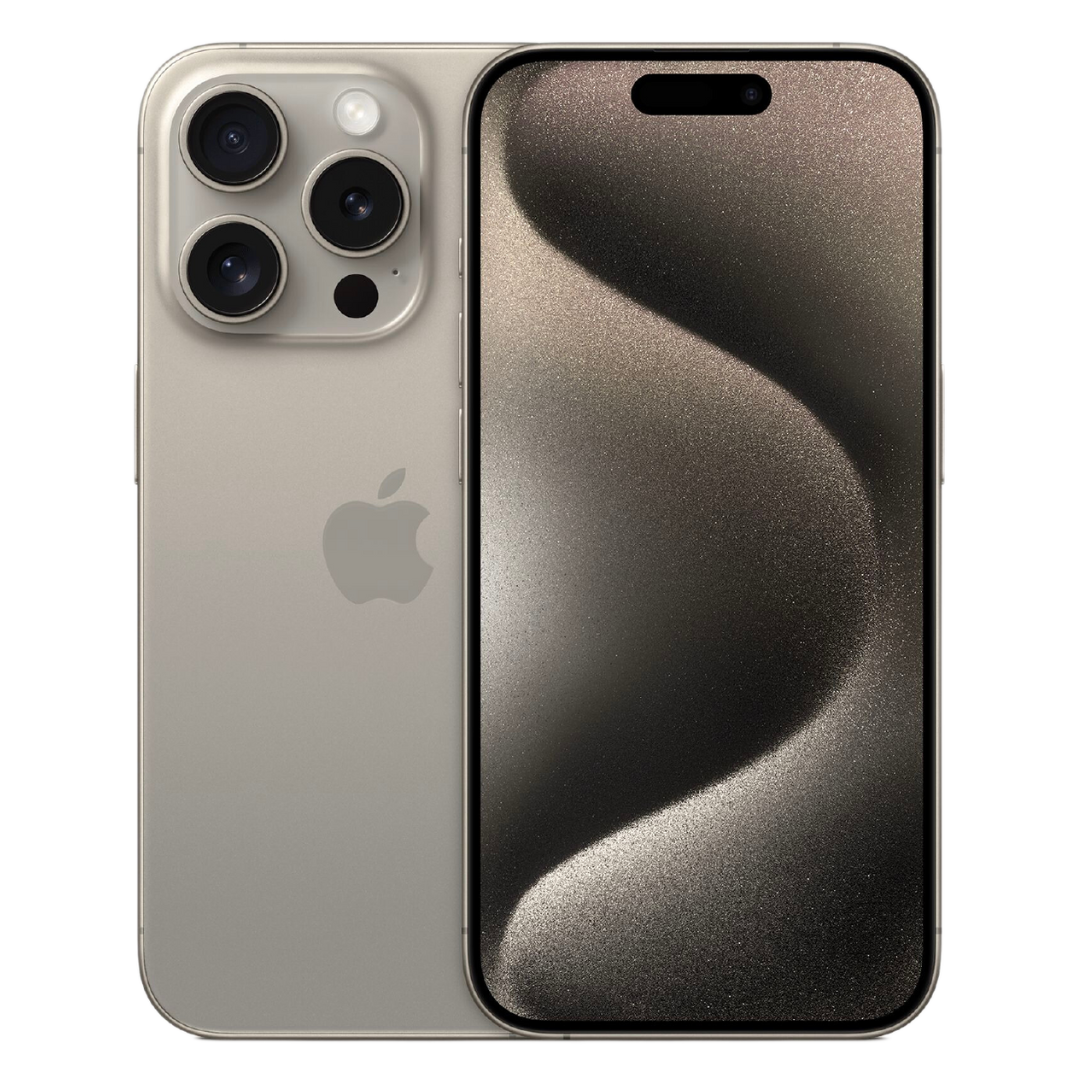
iPhone 15 Pro
The iPhone 15 Pro is the new Pro series flagship from Apple. It’s equipped with the new Apple A17 Pro chipset and 8GB of RAM. It comes in new colors, and it has an even more powerful camera setup and a refined design.
-

iPhone 15 Pro Max
The iPhone 15 Pro Max is the latest and the greatest smartphone in Apple’s lineup. The smartphone is powered by the latest Apple A17 Pro chipset, coupled with 8GB of RAM. It has a more refined Titanium chassis that makes it lighter and more comfortable, and it features a new periscope telephoto camera.
Apple M-Series
Source: Apple
Apple’s M-series of chips are used in iPad Air, iPad Pro, MacBook Air, MacBook Pro, Mac Mini, Mac, and Mac Studio computers and tablets. The first generation of M1 chip was introduced in 2020, alongside the MacBook Air, Mac mini, and the 13-inch MacBook Pro machines. Thanks to the SoC, Apple was able to integrate security components, such as the T-series of chips, inside the M-series to make them more secure. Apple uses Rosetta 2 to enable Apple Silicon computers to use apps built for Mac devices with an Intel processor. While there is a measurable performance hit, it’s insignificant, and general users can often not tell the difference.
Apple M1
The M1 series of chips were manufactured on TSMC’s 5nm process, and they were some of the most powerful and capable chips that Apple announced up until the M2 series arrived later in 2022. The Apple M1 chip was first introduced in 2020 alongside the updated MacBook Air (M1, 2020), Mac mini (M1, 2020), 13-inch MacBook Pro (M1, 2020). Apple later also updated the 24-inch iMac (M1, 2021), and it also equipped two iPad series with the powerful chip, including the iPad Pro (5th generation) and iPad Air (5th generation) of devices.
-
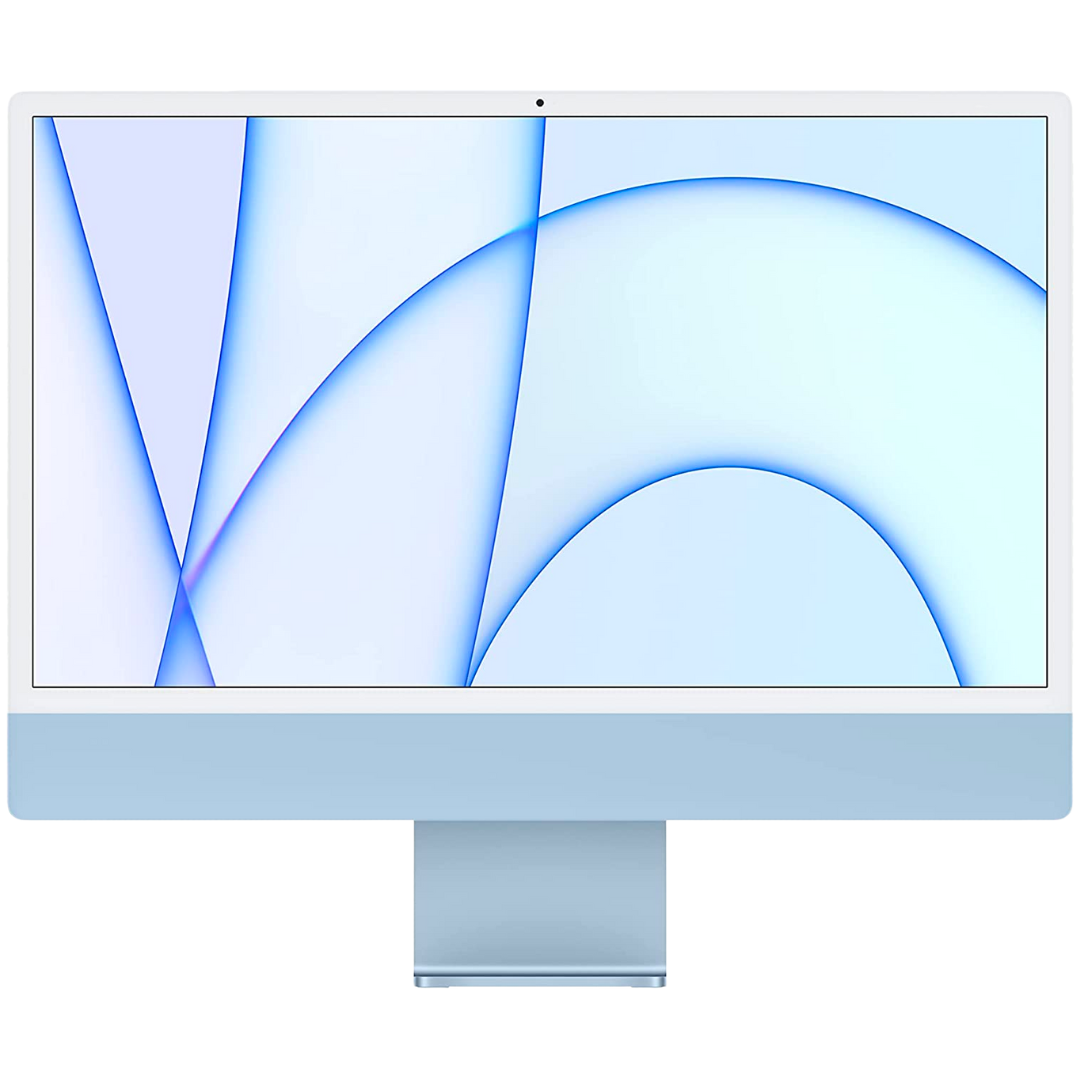
24-inch iMac (M1 2021)
$1200 $1300 Save $100
The latest 24-inch iMac finally comes with Apple’s own powerful M1 Silicon and 8GB of RAM. It has a new, improved design, a higher quality camera, excellent speakers and comes in a number of new colors to brighten up your room or office.
-
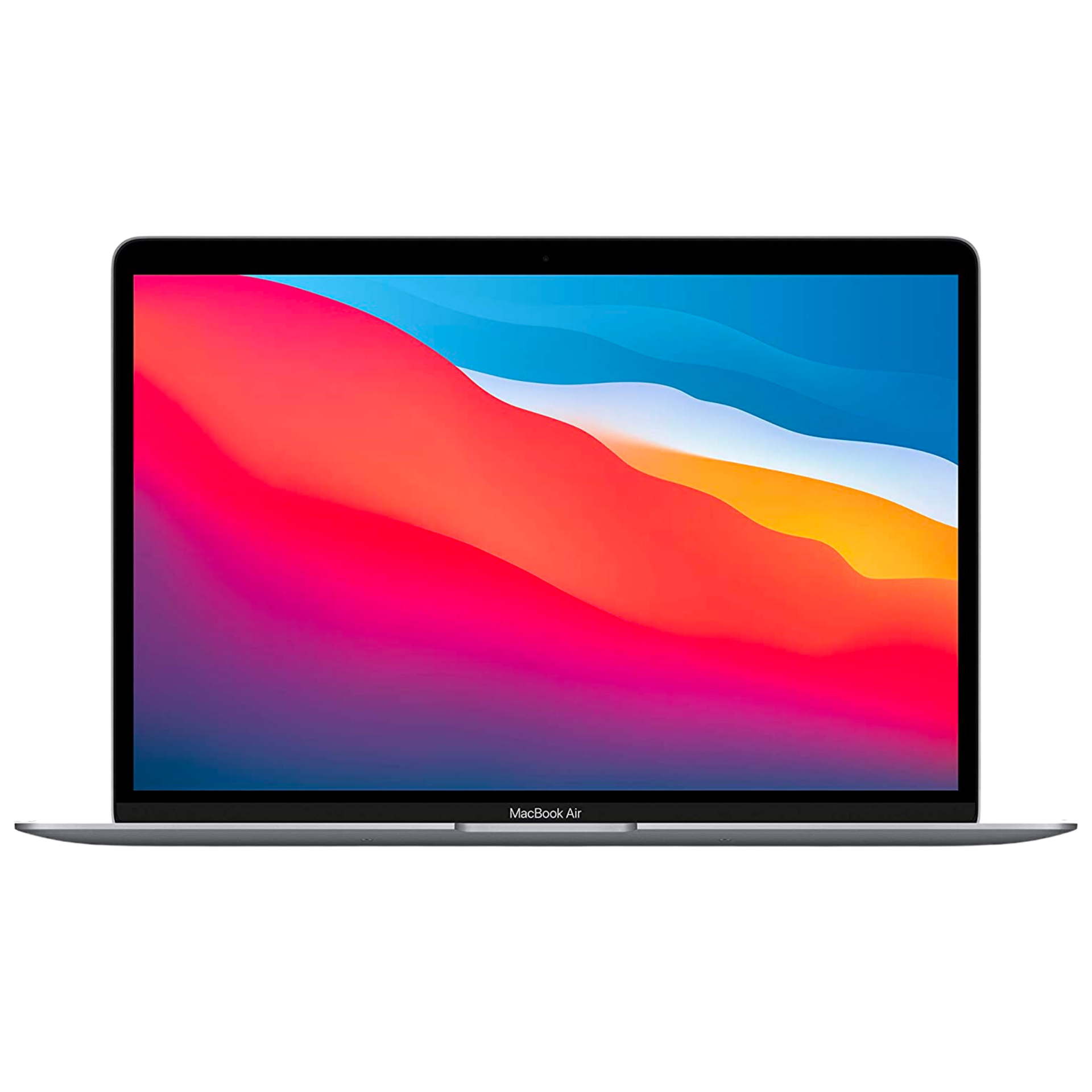
Apple MacBook Air
$750 $999 Save $249
Apple’s 2020 MacBook Air is still one of Cupertino’s best laptops. It features an M1 chip, a fan-less thin design, a 13.3-inch Retina Display, all-day battery life, and other great features.
-
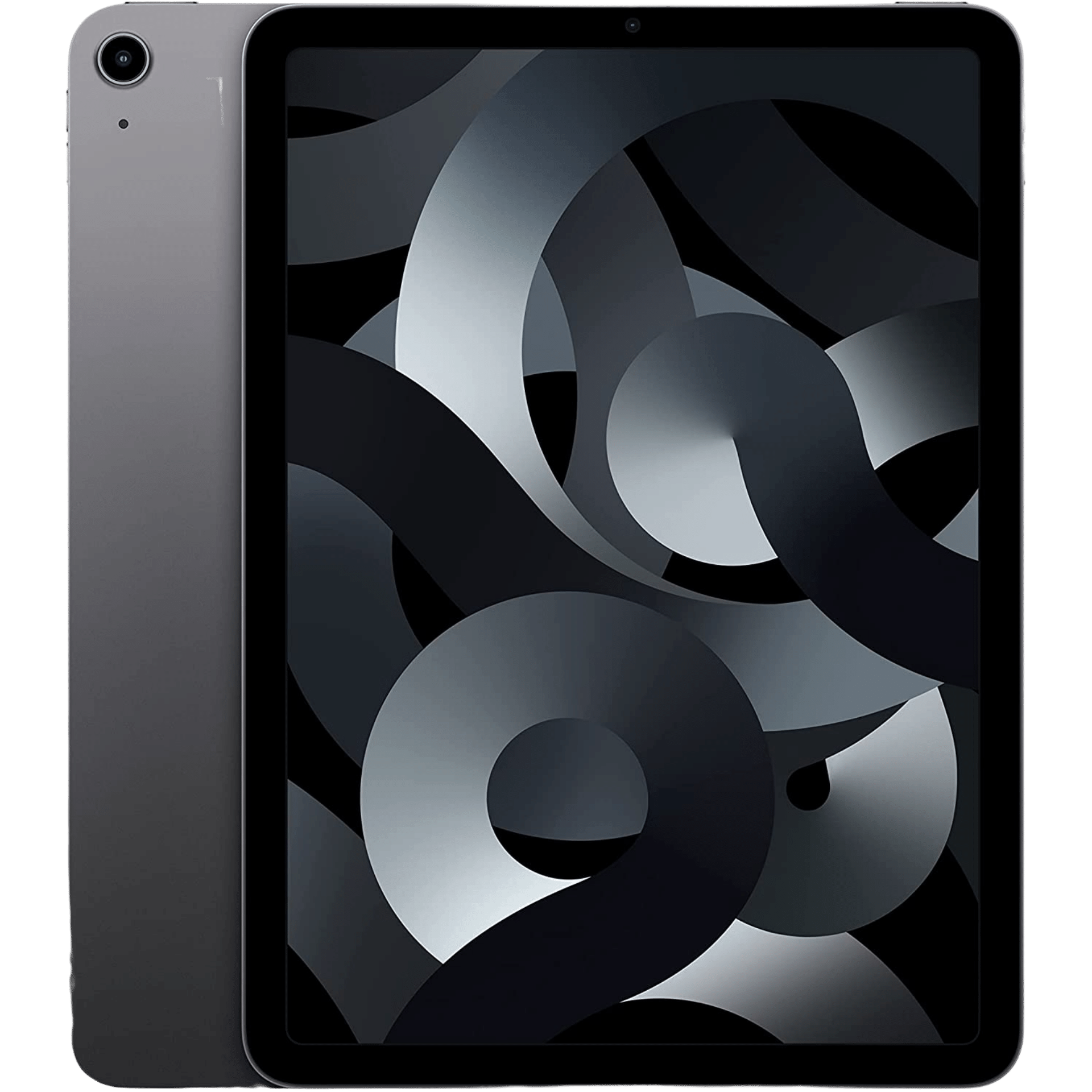
iPad Air (5th Generation)
$500 $600 Save $100
iPad Air 5th Gen brings the highly rated M1 processor, 5G connectivity (for cellular models), Center Stage capability, and all-new colors. It starts at $599 for the 64GB WiFi-only model, with an upgrade to 256GB of internal storage available.
The M1 also had other more powerful versions, such as the M1 Pro, M1 Max, and M1 Ultra chips. These powered different devices, such as the ones shown below:
Apple M1 Pro & M1 Max:
- 14-inch MacBook Pro (2021)
- 16-inch MacBook Pro (2021)
Apple M1 Ultra:
Apple M2
The Apple M2 was announced on June 6, 2022 at WWDC 2022 alongside the MacBook Air, and the 13-inch MacBook Pro. The M2 series of chips included the M2 Pro, M2 Max, and the M2 Ultra. These were made on the 5nm technology and improved the CPU and GPU performance by up to 30% over the previous M1 generation.
Apple M2 Pro
The Apple M2 Pro chip is a more powerful version of the standard M2 chip, and it has up to 12 CPU cores and up to 19 GPU cores. It has up to 32GB of unified memory, and it’s the perfect chip for those who need more power and want to multitask and edit multiple files simultaneously. It can handle everything, and it’s perfect for those who often require to put their devices under heavy workloads.
-
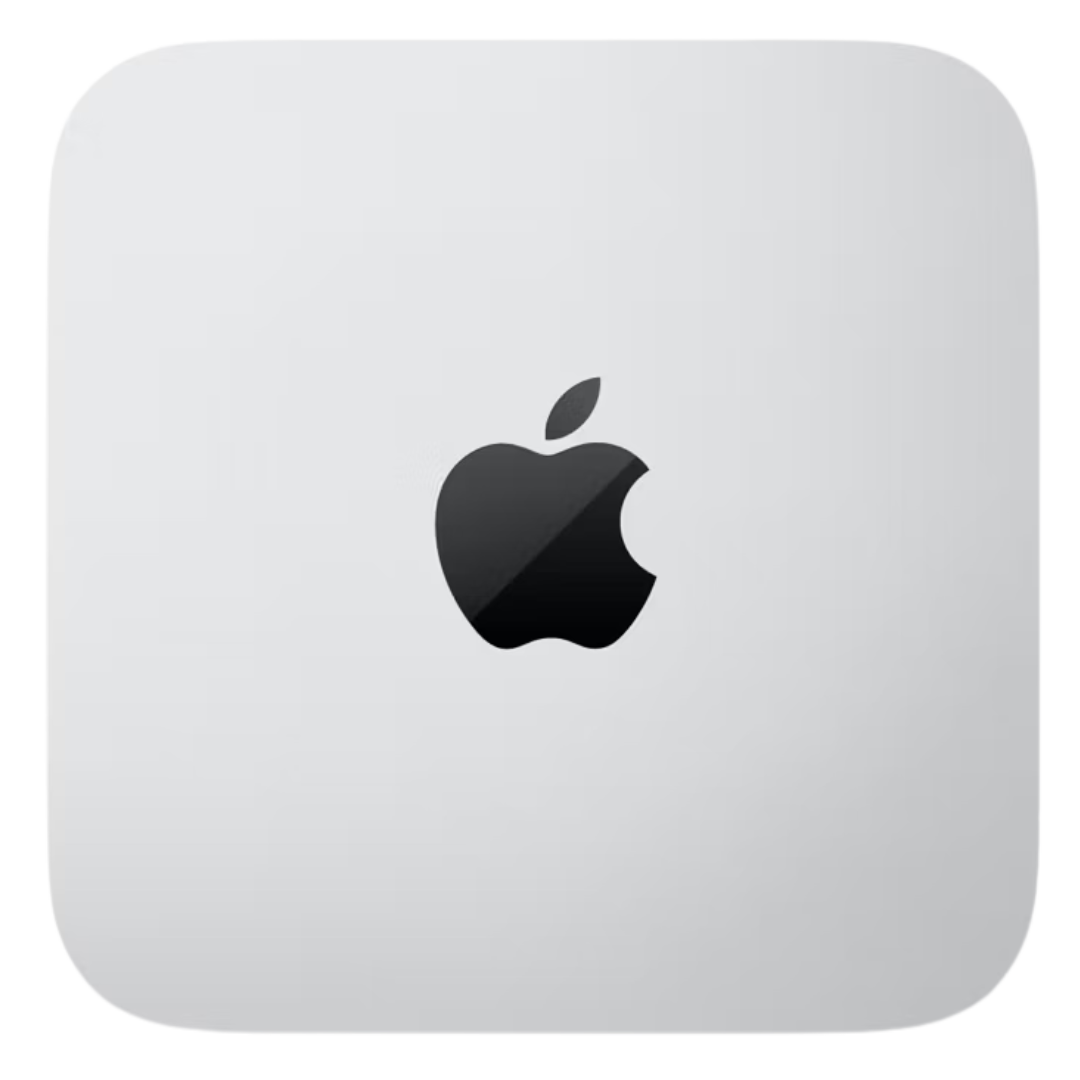
Mac mini with M2 Pro
This variant of the Mac mini comes with the M2 Pro chipset, which features up to 12-core CPU with eight high-performance and four high-efficiency cores. It also features a 19-core GPU, up to 32GB of RAM with 200GB/s of bandwidth, and a 16-core Neural Engine.
-
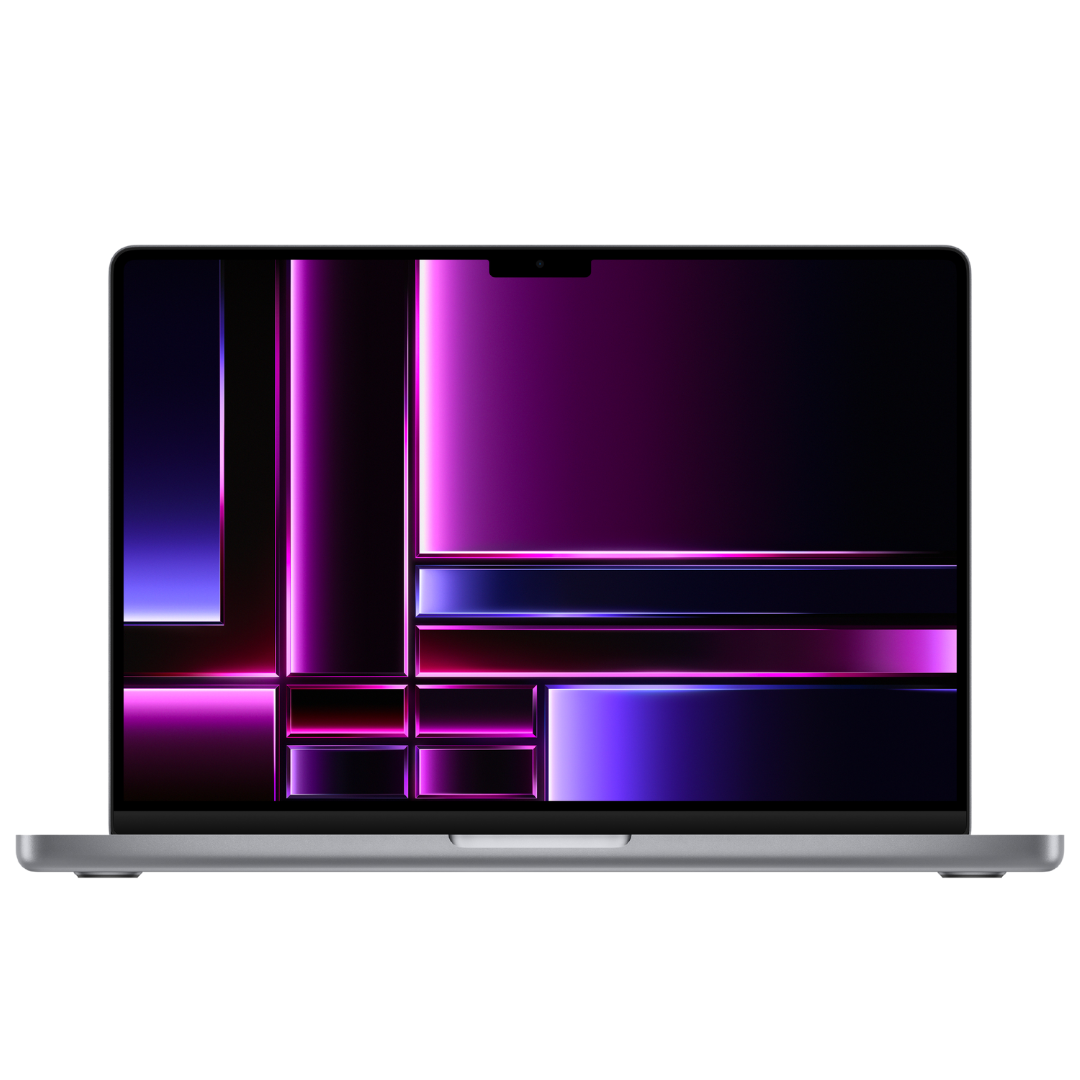
14.2-inch MacBook Pro (2023)
The latest 14.2-inch MacBook Pro (2023) comes with the new M2 Pro or M2 Max-powered chips. The machine boasts up to a 12-core CPU, up to 38-core GPU, up to 96G of unified memory, and 8TB of storage. It’s one of the most powerful laptops on the market in 2023 and one of the best devices for professionals and power users.
Apple M2 Max
Similar to the 2021 lineup of M-series of chips, the M2 Max is the higher-end and more powerful version. The new chip has up to 12 cores of CPU, up to 38-core GPU, and up to 96GB of unified memory. The new M2 Max is the perfect workstation for video editors and professional who require extreme amounts of graphical power on-the-go, and those who need even more performance for multitasking and handling large files. Everyone can benefit from the improved performance of the M2-series of chips, and it’s the latest and greatest silicon in Apple’s lineup.
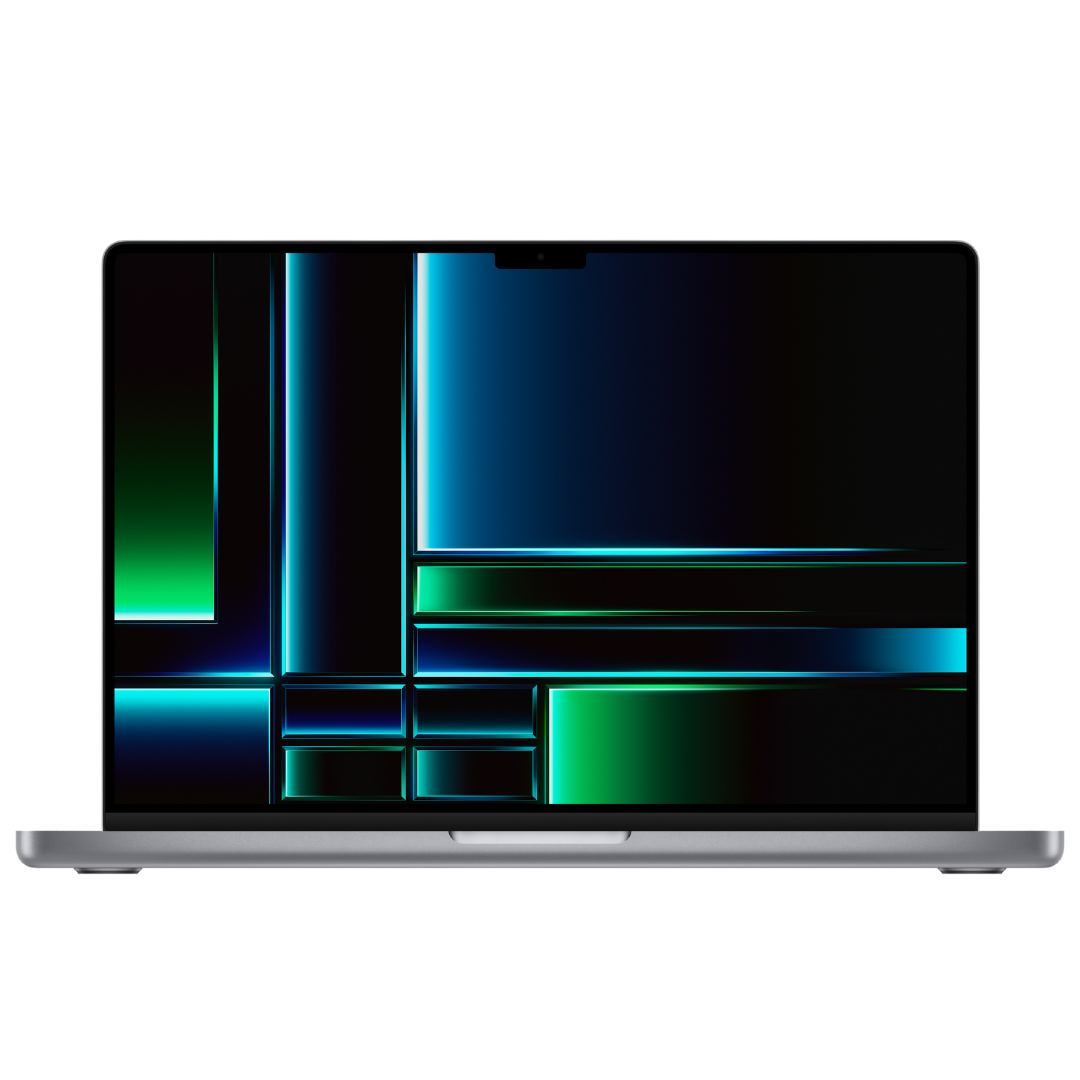
16.2-inch MacBook Pro (2023)
The latest 16.2-inch MacBook Pro (2023) is equipped with the new M2 Pro or M2 Max-powered chips. It can be configured with up to a 12-core CPU, up to 38-core GPU, up to 96G of unified memory, and 8TB of storage. It’s portable, and extremely powerful, able to handle graphics-intensive tasks and multitasking like no other device.
M3 series
The new M3 series of chips were announced on October 30, 2023. It included the standard M3 chip, the M3 Pro and the M3 Max. The M3 series of chips are built on the 3nm process, and offer up to 128GB of unified memory, with the M3 Max offering up to 92 billion transistors, a 16-core CPU, and a 40-core GPU. The M3 Max is currently the latest and highest-end offering from Apple, until we see the M3 Ultra, likely for the upgraded Mac Studio and Mac Pro desktops.
M3 series of devices:
-

24-inch iMac (M3, 2023)
The refreshed 24-inch iMac received a small but mighty upgrade in 2023. It’s now equipped with the powerful new M3 chip, bringing massive performance and efficiency upgrades to the table. It has a bright and accurate display, great sound, and all the accessories you need to get started.
-

Apple 14-inch MacBook Pro (2023)
The 14-inch MacBook Pro has the M3 and M3 Pro chips, a 14.2-inch Liquid Retina XDR display, and up to 36GB of RAM. It’s the perfect compact powerhouse that can enable you to do all demanding tasks, whether that’s video editing, 3D modeling, or gaming on the go.
-

Apple 16-inch MacBook Pro (2023)
The 16-inch MacBook Pro has the M3 Pro and M3 Max chips. It’s a great laptop for power users who demand more in a small and compact form factor. The MacBook can last for up to 22 hours on a single charge, and it’s up to any task with the new chips that provide up to 50% faster speeds of the M1 series of devices.
[ad_2]



